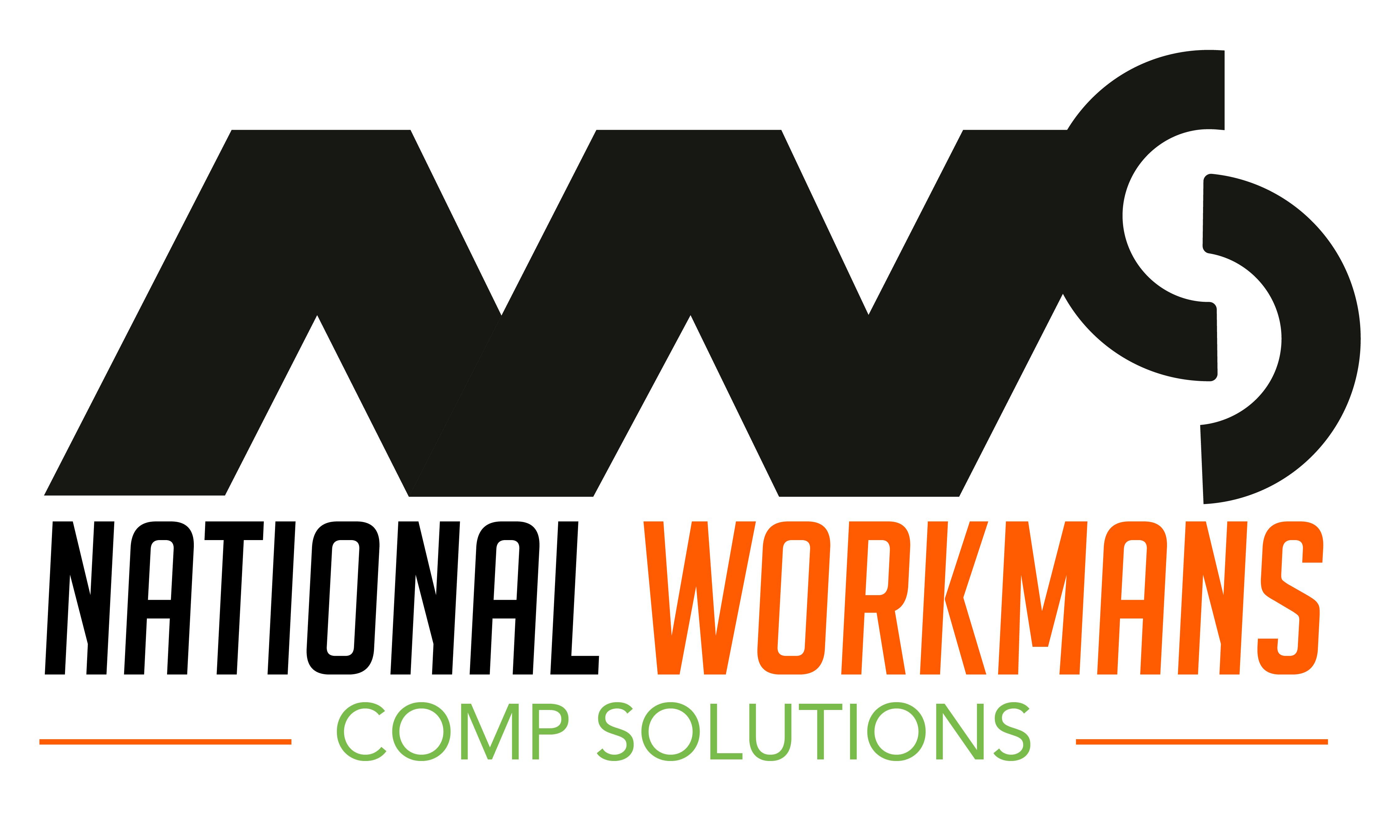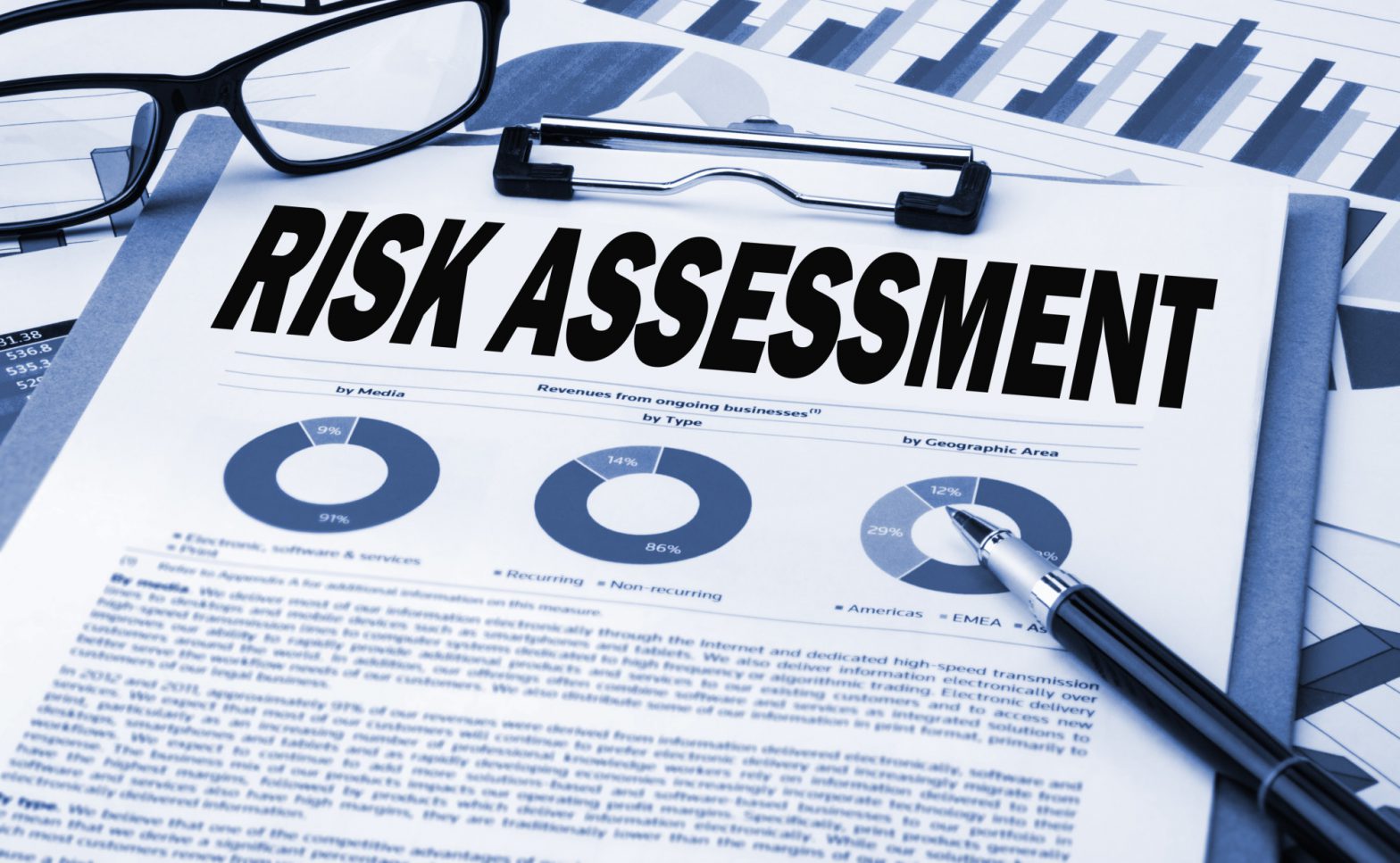Do you want to streamline your human resources and workplace safety processes? One effective solution is to outsource these tasks to an HR provider.
But with many providers to choose from, it can be challenging to navigate the world of HR outsourcing. That’s where risk assessment comes in. By conducting a thorough evaluation of potential providers, you can mitigate the risks of making the wrong choice.
In this article, we’ll explore the key considerations for choosing an HR provider. We will look at the different types available, their benefits, and their drawbacks. You will learn how to make the right decision for your business.
We’ll also examine the emerging trends in HR outsourcing. This includes automation, artificial intelligence, and how they are shaping the industry.
What Is Workplace Safety?
Workplace safety means keeping people safe while they are working. This includes taking steps to prevent accidents and injuries from happening.
Employers are responsible for making sure their workplaces are safe for everyone. This can involve things like
- Providing safety equipment and training
- Keeping the workplace clean
- Organize and follow safety regulations
Workers also have a role to play in workplace safety by following safety rules and reporting any unsafe conditions. By working together, employers and employees can create a safe workplace.
Public Relations
Public relations manages how people see a company or organization. This can involve things like writing press releases and creating social media posts. They also organize events to promote the company or organization.
The goal of public relations is to create a positive image. They help to build trust with the public. This can help attract customers and support the organization’s goals.
Public relations professionals work to communicate with the public and respond to any issues that arise. They can help the company or organization maintain a good reputation and succeed in its objectives.
What Is a Risk Assessment?
Risk assessment is a critical process. It helps to identify and manage workplace hazards to ensure the safety of employees and prevent accidents or injuries. The aim of a risk assessment is to:
- Evaluate potential hazards
- Determine the level of risk
- Put in place measures to control or eliminate them
Common Workplace Risks and Hazards
Workplace safety is essential for everyone, regardless of their job or industry. Employers and employees should be aware of the common risks and hazards in the workplace. Here are some of the most common risks and hazards that people may face while on the job.
Slips and Falls
These are significant risks in many workplaces, and they can lead to severe injuries. Wet or slippery floors, cluttered workspaces, or uneven surfaces are common causes of slips and falls. It is essential to keep walkways clear and clean and to provide anti-slip materials when necessary.
Ergonomic Injuries
These are injuries that result from repetitive motion, awkward positions, or improper lifting techniques. These injuries can cause significant pain.
You can prevent this by adjusting workspaces and tools to suit the worker’s physical needs. Employers should also provide ergonomic training to their employees to help them recognize and prevent these injuries.
Exposure to Hazardous Materials
Another significant risk in many workplaces is exposure to hazardous materials. This exposure can cause illnesses or injuries, such as respiratory problems or skin irritation.
It is crucial to identify hazardous materials in the workplace. Proper safety equipment and training must be available to at-risk employees. Employers should also follow proper procedures for handling and disposing of hazardous materials.
Identifying and Assessing Risks
To identify and assess workplace risks, you need to conduct a comprehensive risk assessment. This involves reviewing all aspects of the workplace. This includes:
- Equipment
- Materials
- Processes
- Tasks
Once you identify hazards, evaluate their likelihood and severity, and put measures in place to control or eliminate the risks.
The Importance of Regular Safety Inspections
Regular safety inspections ensure ongoing workplace safety. Inspections help to identify potential hazards and ensure that existing safety measures are functioning.
Designated safety officers or employees should conduct regular safety inspections. This will help identify and address any new hazards at once.
The Benefits of Workplace Risk Assessments
A workplace risk assessment can provide many benefits to businesses, their employees, and their bottom line. By identifying and managing workplace hazards, companies can:
- Improve employee morale and productivity
- Reduce accidents and injuries
- Save costs
Improved Employee Morale and Productivity
When employees feel safe and secure in their workplace, they feel motivated, productive, and engaged. By implementing safety measures that reduce risks and hazards, businesses can create a positive work environment. This promotes employee well-being and job satisfaction.
Reduced Accidents and Injuries
Workplace accidents and injuries can be expensive, both in terms of lost productivity and potential legal liabilities. By conducting a risk assessment and implementing safety measures, businesses can reduce the likelihood of accidents and injuries. This protects both their employees and their bottom line.
Cost Savings
By preventing accidents and injuries, businesses can save money on medical costs, insurance premiums, and workers’ compensation claims. Safety measures can help reduce property damage and equipment repairs, further reducing costs and improving the bottom line.
What Is a PEO?
A PEO, or professional employer organization, assumes a greater level of responsibility for HR functions and workplace safety. With a PEO, the client company enters into a co-employer relationship. This means the PEO shares legal responsibility for HR management and compliance.
A PEO provides a broader range of services, including risk management, safety inspections, and training, in addition to traditional HR functions.
Businesses can determine which type of HR provider is right for their needs. They must consider factors such as the size of the company, the level of involvement desired in HR and safety, and the specific services needed.
For smaller businesses with limited HR resources, a PEO or ASO may provide valuable support in managing HR and safety. However, for larger companies with more established HR departments, an HRO may be a better fit for outsourcing specific HR functions.
Is a PEO a Good Idea?
The decision to partner with a PEO depends on the specific needs and goals of a business. PEOs can help small and mid-sized businesses save money.
They can also improve HR operations. PEOs don’t compromise the quality of services provided to employees.
Benefits of PEO
PEOs can help businesses create and put in place effective safety policies and training programs. This helps in reducing workplace injuries and workers’ compensation costs. They provide access to safety experts and resources that businesses may not have otherwise.
Access to Expertise
PEOs are experienced professionals who can provide guidance and support in the areas of workplace safety, risk management, and compliance. This can help businesses stay up-to-date with regulations, implement best practices, and reduce the risk of accidents and injuries.
Cost Savings
PEOs can also help businesses save money on administrative costs associated with managing safety programs, training, and compliance. By outsourcing these functions to a PEO, businesses can focus on their core operations while still maintaining a strong safety program.
Reduced Liability
By partnering with a PEO, businesses can also reduce their liability in the event of workplace accidents or injuries. PEOs provide insurance coverage, including workers’ compensation and general liability insurance, which can help protect businesses from financial losses.
Better Benefits
PEOs can negotiate better rates for employee benefits and insurance plans. This can help businesses provide competitive benefits without high costs.
Improved HR Operation
Another advantage of working with a PEO is improved HR operations. PEOs have the ability and resources to handle complex HR issues, such as compliance with federal and state regulations, employee relations, and risk management. This can help businesses avoid legal disputes and ensure that they follow all applicable laws.
Improved Employee Morale
Partnering with a PEO can improve employee morale and retention. PEOs offer access to a wider range of employee benefits. This includes retirement plans, health insurance, and training and development programs. This can help businesses attract and maintain top talent, which is essential for growth and success.
Partnering with a PEO may not be the best fit for every business. Some businesses may have unique HR needs or prefer to handle HR functions in-house.
It’s also important to research and vet potential PEO partners. Make sure that they are a good fit for your business and can provide high-quality services.
What Is a PEO Insurance Policy?
A PEO insurance policy is an additional layer of protection that a professional employer organization (PEO) offers to businesses. It helps to mitigate the risks associated with workplace accidents and injuries. The PEO insurance policy provides coverage for different types of liability.
General Liability Insurance
This covers damages and injuries that may occur to third parties, such as customers or vendors. It covers them while they are on the business premises or while the business is operating.
Workers’ Compensation Insurance
This type of coverage provides protection for work-related injuries and illnesses that employees may experience while on the job. It applies regardless of who is at fault. It can cover medical expenses, lost wages, and rehabilitation costs.
Professional Liability Insurance
Professional liability insurance, also known as errors and omissions insurance, is crucial for businesses that provide services to clients. This type of insurance can cover legal fees, settlements, and judgments that may result from a professional mistake or oversight.
PEOs offer comprehensive insurance policies tailored to meet the specific needs of each business. PEOs have access to a wide range of insurance carriers. They can offer competitive rates and customize policies to suit the unique requirements of each client.
By partnering with a PEO, businesses can enjoy the benefits of having access to comprehensive insurance coverage without having to manage multiple policies from different providers.
The PEO insurance policy provides businesses with peace of mind, knowing that they have adequate protection against workplace accidents and injuries.
What Is an HRO?
Human Resources Outsourcing (HRO) is a business practice in which a company contracts with an external provider to handle some or all its HR functions. This can include tasks such as payroll, benefits administration, and recruitment.
The goal of HRO is to reduce costs and improve the efficiency of HR operations. By outsourcing these functions, companies can focus on their core business activities and leave HR management to the experts.
Benefits of Using an HRO
HRO providers can offer specialized knowledge and resources, allowing companies to access best practices and stay up-to-date with the latest HR trends.
HRO can be a valuable option for small and mid-sized businesses looking to improve their HR operations without investing in an in-house HR department.
Outsourcing human resources (HR) to a third-party provider, also known as an HRO, can offer several benefits to businesses. By outsourcing HR, businesses can:
- Save time
- Reduce costs
- Improve compliance with labor laws and regulations
HROs also provide expertise in HR functions such as recruitment, benefits administration, and risk assessment. This allows businesses to focus on their core operations while ensuring that HR functions are handled.
They can offer access to technology and data analytics that can provide insights into HR performance and inform decision-making. By partnering with an HRO, businesses can improve HR operations and achieve greater success.
What Is an ASO in HR?
An ASO, or Administrative Services Organization, is a company that offers HR outsourcing services to businesses. These services include administrative and payroll services such as:
- Employee Benefits Administration
- Workers’ compensation management
- Payroll processing
An ASO acts as a co-employer. This means that they share the responsibility of managing employees with the business owner.
With an ASO, businesses can reduce their administrative workload and focus on core business functions. An ASO can be a valuable partner for businesses looking to streamline their HR operations and improve their bottom line.
Benefits of Using an ASO
The benefits of using an ASO include greater flexibility and control over HR functions. Businesses can choose which services they want to outsource and which ones they want to handle in-house.
ASOs can provide businesses with access to specialized expertise, such as legal or compliance support. This can be useful for managing workplace safety.
Comparing HROs, ASOs, and PEOs
When it comes to HR outsourcing, businesses have many options to choose from. These providers differ in terms of the level of involvement and responsibility they have for managing HR and safety.
Differences in Services Offered
Human Resources Outsourcing (HRO) providers offer more specialized HR services, such as recruitment and training. ASOs and PEOs offer a broader range of HR and administrative services.
ASOs and PEOs differ in their level of involvement in employee management. PEOs assume more responsibilities in this area.
While PEOs and ASOs both offer HR and administrative services to businesses, there are some key differences between the two. PEOs take on more responsibilities. They assume the role of the employer of record for their client’s employees.
ASOs provide more targeted services, such as payroll processing or benefits administration.
How to Choose the Right PEO, ASO, or HRO
Choosing the right HR provider is crucial for businesses that want to manage workplace safety and compliance. Here are some factors to consider when selecting a PEO, ASO, or HRO:
Industry-specific Expertise
Look for providers that have experience working with businesses in your industry. This can help ensure that they have a thorough understanding of the unique safety and compliance challenges that your business may face.
Reputation
Do your research and check the provider’s reputation. Look for customer reviews, ratings, and testimonials. You can also ask for references from current or former clients.
Cost
Consider the cost of the services provided by each provider. Make sure to compare and understand the costs involved, including any hidden fees.
Level of Involvement
Determine how much involvement you want the provider to have in managing your HR and safety processes. PEOs take on more responsibility, while ASOs may offer more flexibility.
Additional Services
Consider whether the provider offers added services beyond HR and safety management. This may include payroll processing or employee benefits administration.
Evaluate Providers
Here are some tips for evaluating different providers. They will help you make an informed decision:
Ask Questions
Be sure to ask questions about the provider’s services, ability, and experience. This can help you better understand what they offer and whether they are a good fit for your business.
Request a Proposal
Ask each provider to give a proposal that outlines their services, costs, and terms. This can help you compare different providers and make an informed decision.
Check References
Ask for references from current or former clients. Follow up with them to get a sense of their experience working with the provider.
Take Your Time
Don’t rush into a decision. Take the time to check out different providers and make informed decisions that meet the unique needs of your business.
Common Mistakes to Avoid
Using an HR provider can be a great way for businesses to manage their HR needs. There are some common mistakes that businesses make when working with HR providers that can hinder their success.
One common mistake is failing to communicate with your HR provider. This can lead to misunderstandings, missed deadlines, and other issues that can impact your business.
Another mistake is not understanding the services provided by your HR provider. While they may offer a range of services, not all HR providers offer the same level of support. It’s important to understand what services they provide and their methods of delivery.
To get the most out of their HR provider, businesses should check how well they are doing and make changes if needed. This way, they can make sure their HR needs are being met and that their investment is worth it. By being careful and working well with their HR provider, businesses can do better and get all the benefits of these services.
Emerging Trends in HR Outsourcing
As technology continues to advance, the HR outsourcing industry is also evolving. Some of the emerging trends in HR outsourcing include the increasing use of artificial intelligence (AI) and automation.
These trends are changing the way HR providers deliver their services. Businesses need to be aware of these changes to stay ahead of the curve.
AI and Automation
One of the major impacts of AI and automation in HR outsourcing is the increased efficiency and accuracy of HR processes. AI-powered chatbots can assist employees with common HR queries.
This frees up HR staff to focus on more complex tasks. Automation can also streamline HR processes. These include payroll and benefits administration, which reduces errors and saves time.
Data Analytics
Another emerging trend is the use of data analytics to improve HR decision-making. HR providers are using data to gain insights into workforce trends and identify areas for improvement.
This can help businesses make more informed HR decisions. It can improve employee satisfaction and productivity.
Businesses need to be cautious when adopting these emerging trends. They need to ensure that the technology they use is reliable and secure. They must ensure that their HR provider has the necessary expertise to implement these technologies.
Businesses need to be aware of the potential risks associated with automation. It could lead to job loss and data privacy concerns.
Partner With NWCS for HR Success
Conducting regular risk assessments is a critical step in ensuring workplace safety. It minimizes potential harm and loss. By identifying and evaluating hazards, businesses can implement controls to eliminate or reduce risks.
Businesses should consider outsourcing their HR functions to reputable providers with extensive experience in risk assessment. If you are a charity in need of HR support, National Workers Comp Solutions is here to help.
Our team of experts can assist you in conducting thorough risk assessments. We will help you develop effective controls to ensure the safety of your employees and volunteers. Contact National Workers Com Solutions today to learn more about our services.


 April 7, 2023
April 7, 2023 Blog
Blog 









